These healthy, biologically-appropriate options will give your kitty the best chance of a long, happy, and healthy life
There’s no question that wet food is the best option for cats. There are way more healthy wet foods than there are dry foods out there.
Even so, that doesn’t mean that all wet foods are healthy. Quite the opposite!
While it’s easier to make a soft food that will keep your kitty fit throughout her life, many companies still pack fillers and potentially harmful ingredients into their recipes, just to make a quick buck.
Meat is an expensive ingredient, after all!
But meat is what cats want – and need – to eat to stay healthy.
Through exhaustive research and the creation of our database of over 2000+ cat foods, we narrowed it down to our top-rated options.
You can read more in-depth information further below, but here is our top five list.
Our review process is unbiased and based on extensive research. If you buy through the links on our site, we may earn a commission.
Our review process is unbiased and based on extensive research. If you buy through the links on our site, we may earn a commission.
The Best Wet Foods for Cats
Editor’s Choice
Feline Natural Grain-Free
- Whole food, all-natural ingredients
- Novel protein (venison)
- Nutritionally appropriate diet for all breeds
How To Choose The Best Wet Food For Your Kitty
Food is the number one way to keep your cat happy, healthy, and long-living.
Just like for humans, food is the fuel that keeps your cat going.
If you fill her up with cheap food stuffed with carbs, fillers, and other junk, you shouldn’t be surprised when she’s slow, lazy, lethargic, has a dull coat, and eventually gets sick.
But what does your cat’s body need to thrive? What’s the “high octane” gas she needs in her system to live a healthy life by your side for years?
Well…
Biologically, a cat’s body can only produce 12 of the 23 amino acids that are required for your cat’s optimal health. And where does your feline friend get the other 11?
From its food, and in particular, meat.
Cats are carnivores.
Carnivores need real meat and moist food.
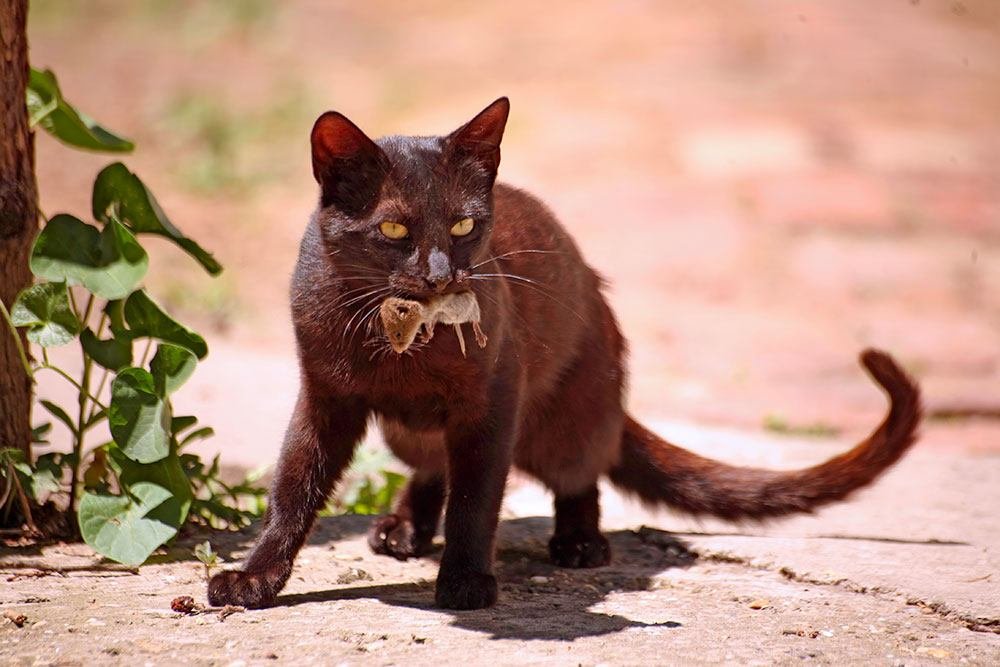
(Cat’s have a poor thirst drive…they never drink enough water. That’s because, in the wild, they get most of their water from the prey they eat. Most meat is 60-70% moisture!)
Your kitty’s body is designed to function on only a few meat-based ingredients.
Lots of ingredients used in commercial cat food today can make your cat sick. (I’d be happy to send you our list of the 15 worst cat food ingredients, just click here and leave me your email and I’ll send it over).
The best foods are those that are packed full of meat (including organ meat) and have about 50% of their calories coming from protein and 50% coming from fats.
A few carbs are OK but no more than 5-10%.
This is just the quick version of what makes a cat food GREAT, but it should help you see why we picked what we picked below in our list…out of the 2000+ options we’ve researched.
If you want to learn more about our process and feline dietary needs, we’ll explain it in greater detail below our reviews, but if you just want the best of the best for your cat, check out our ratings right here:
Reviews Of The Best Wet Cat Foods
EDITOR’S CHOICE
#1. Feline Natural Grain-Free New Zealand Chicken & Venison
Macronutrients on a caloric basis:
- Protein: 40.1%
- Fat: 54.1%
- Carbs: 5.8%
First 4 ingredients: Chicken, Chicken Heart, Venison Kidney, Venison Liver
Recall info: 1 recall, for their dog food
Cost/week for a 10 lb cat: $43.87
The ingredient list for this food is short.
And that’s fantastic news.
It means that this food gets most of the vital nutrients that cats need (vitamins and minerals) from the actual whole-food ingredients, like chicken heart, venison kidney, venison liver, and New Zealand green mussels.
So many foods have a massive list of ingredients, including a long list of added vitamins and minerals.
While Feline Natural does include 9 additional vitamins and minerals, it’s a LOT better than the 18+ that most other companies have to add.
Cats will digest and absorb the nutrients in whole food much better than added synthetic vitamins and minerals.
This recipe also includes just 8 whole food ingredients, most of which are meat (including organs, which are incredibly important for their overall well being).
That means there are absolutely NO fillers or controversial items in here.
This is the “cleanest” canned food out of all of our recommendations thanks to its limited ingredient list.
We’ve already talked about the importance of organ meat, but we love the addition of mussels.
Mussels are a very high-quality ingredient that only a few of the top foods use.
They’re full of nutrients that help keep your kitty’s joints healthy. This is especially important for senior cats.
Now, the protein and fat levels are great, but they’re not perfect.
When we’re looking at what cats prefer to eat (studies have shown this is true in both the wild AND in lab tests with domestic cats), we know that the ideal feline diet is about 50% protein and 50% fat.
This falls just short on the protein while giving a little bit of extra fat.
However, it’s miles ahead of most options out there, and if you’re looking for a limited ingredient diet that helps strengthen your furry friend’s joints, this is a great option.
The Positives
- Limited, but very high-quality, ingredient list
- Great use of organ meats and novelty protein (venison)
- Includes joint-health ingredients like mussels
The Negatives
- Slightly lower protein/higher fat compared to others on this list
- Expensive
>> Tap Here To Read More Reviews and Get The Best Price On Chewy.com <<
#2. Nutro Perfect Portions Turkey & Liver
Macronutrients on a caloric basis:
- Protein: 54.6%
- Fat: 40.7%
- Carbs: 4.7%
First 4 ingredients: Chicken, Chicken Broth, Chicken Liver, Pork Broth
Recall Info: 4 recalls
Cost/week for a 10 lb cat: $26.49
Nutro is a great option that comes in on the less expensive side of things.
The only non-meat option at the top of the ingredient list is guar gum, which is a fairly safe (though not perfect) thickening agent.
It includes turkey and chicken liver, which are fantastic ingredients for cats.
Organ meat, like liver, is especially important and provides not only protein but iron and vitamins.
We would like to see it include another type of meat, though, like heart or kidney, just to round out the nutrients that your cat is getting from whole foods.
Instead of using “water for processing”, like most cheaper canned foods, Nutro uses chicken and pork broth.
While not packed with nutrition, they will have a little bit more nutrients than water, so it’s a nice touch when brands use these ingredients.
And then it’s just a variety of vitamins and minerals to make sure your cat has all she needs to be a happy, healthy kitty.
The Positives
- Near-perfect macronutrient profile
- Limited ingredients
- Chicken and pork broth instead of water
The Negatives
- Includes guar gum as a thickener
- Would like to see more organ meats used
>> Tap Here To Read More Reviews and Get The Best Price On Chewy.com <<
Crave got the message that cats love organ meat.
It includes chicken liver and heart, which are both very important cuts of meat that provide not only the protein your cat needs to stay healthy, but micronutrients like vitamin A, B vitamins, and iron.
The macronutrients (protein and fat) are among the best you’ll see since they very closely mirror what cats choose to eat in the wild.
While we don’t love the tapioca starch, dried tomato, and xanthan gum in this recipe, they exist in very small amounts, and won’t harm your cat.
They’re probably added to help the food keep its shape a little bit more, rather than being too “soupy”.
Considering they managed to get such an amazing amount of protein and fat in there…this proves there’s hardly any “filler” ingredients, and that it’s suited perfectly for cats of all ages.
The unique package design allows you to quickly and easily open up a package and feed it to your cat without having to measure from a can (super convenient to just open a package and be done), though we don’t love that it ends up using a lot of plastic.
Interestingly, they include pork plasma (blood) in this recipe, which is a good addition.
Plasma is used as a gelling agent or thickener, in place of synthetic ingredients that might harm your cat.
Because it’s blood, which cats would eat a lot of in the wild, it’s biologically appropriate and may help your cat digest the food better.
Due to the protein and fat numbers and the mostly-great ingredients in this recipe, we highly recommend this food.
The Positives
- Near-perfect macronutrient profile
- Good use of healthy organ meats
- Plasma (blood) is a good natural thickening agent and helps digestibility
The Negatives
- Includes a small amount of “filler” ingredients
- Plastic packaging may create a lot of waste
>> Tap Here To Read More Reviews and Get The Best Price On Chewy.com <<
Across the board, Tiki Cat probably has the best overall line of cat food.
While some companies have 2 or 3 great recipes and several mediocre ones, Tiki Cat manages to have an entire line-up of great recipes.It’s definitely on the more expensive side of things, but there are ZERO fillers in here.
The Chicken & Duck recipe in their After Dark series contains chicken and duck, as well as chicken liver, chicken heart, and chicken gizzards. These are all very high-quality ingredients, and it’s great to see organ meat listed so prominently.
After that, it’s vitamins and minerals. And that’s it. No gelling agents, no thickeners, no added carbs.
This is a very “clean” cat food, with literally no controversial ingredients. The protein is very high. We wouldn’t mind seeing a ratio closer to 1:1 between protein and fat, but regardless, this remains an amazing pick.
Each one of the After Dark recipes scores a perfect 5/5 on our rating scale, and if you’re looking for an exciting meal for a picky eater, this is probably one of your best bets.
The Positives
- Limited ingredient, very clean recipe
- High protein
- Nice use of healthy organ meats
The Negatives
- Expensive
- Would like to see the protein:fat ration be closer to 1:1
>> Tap Here To Read More Reviews and Get The Best Price On Chewy.com <<
How We Rate And Review Foods
We have collected a massive database after hundreds of hours of research and analysis.
It now contains over 2000 individual foods that we have rated and reviewed.
We collected all the relevant information on each product, including:
- AAFCO Rating
- Ingredient list
- Macronutrient profiles (Guaranteed Analysis, Dry-Matter Basis, and Caloric Basis, for Protein, Fat, and Carbs)
- Price
- Calories
- Whether meat is the first ingredient
- How each food compares to the average of all foods on a macronutrient basis
- Whether the recipe uses more than 4 controversial ingredients
We also went out and researched what the ideal diet for a cat truly is, using peer-reviewed studies and veterinarian experts.
You can find that below, under the section “What Cats Really Want To Eat”.
Using that information, we rated each food to see how it stacked up to the “ideal feline diet”.
Each of the data points we collected works together to form a star rating on a 0-5 star scale (including half points).
- If the food’s first ingredient is meat, it gets 1 point.
- If the food does not use unnamed meat ingredients (“meat by-products”), it gets 1 point.
- If the food has an above-average protein level on a dry-matter basis, compared to all other foods in the database, it gets 1 point. If it has an average amount, it gets .5 points.
- If the recipe contains fewer than 4 controversial ingredients (not necessarily bad ingredients), it gets 1 point. If it contains exactly 4 it gets .5 points.
- The final available point is a discretionary point that we award based on things like carbohydrate content, the inclusion of probiotics and vitamins, and other points, and is our judgment call on a food’s quality and biological appropriateness for your cat.
This is a fair, transparent system that allows us to compare every single food.
This is the information we use when we come up with our “top food” recommendations.
This is not random. This is not subjective. No company pays us anything to get on this list.
(We receive a small affiliate commission at no extra cost to you if you purchase through any of our links, but it is a flat rate…we don’t get paid more for recommending expensive products!)
All of the foods listed above are rated 5 out of 5 stars in our database.
Only 7.5% of foods on our list got a perfect 5/5 score.
And honestly, we’ll be going through it again and knocking a point off here and there, since we continue to gather important information…so the final “club” of 5/5 foods will grow even smaller.
37% of foods scored 2.5 stars or lower.
And remember, if we are hoping to provide you with the option that is closest to the “ideal feline diet”, even 4-star foods are missing out on at least one important category (low protein, controversial ingredients, etc.).
So the list we have provided you above is the absolute best of the best!
How To Choose The Best Wet Cat Food
We don’t just go onto Amazon and pick the foods with the best reviews as many other sites do.
We’ve put hundreds of hours of research into our cat food project because we’ve learned just how important nutrition is to your furry pal.
Years of eating low-quality food could, quite literally, cause your cat to die early or suffer from serious, painful illnesses.
So let’s walk through a little bit more on how to choose the right soft food.
What Cats Really Want To Eat
There have been 2 important studies done that show exactly what cats want to eat.
One study took data from dozens of other studies and put it all together.
It found that feral or wild cats eat a diet exclusively of small animals.
Mostly rabbits, rats, mice, voles, and birds.
They found that on a calorie-basis, cats choose to eat foods that give them the following macronutrient breakdown:
- Protein: 52%
- Fat: 46%
- Carbs: 2%
Another study was done on domestic cats.
Cats were given the ability to choose between a variety of commercial cat foods.
Researchers discovered that cats “self-selected” a diet that was very similar to their wild diet:
- Protein: 52%
- Fat: 36%
- Carbs: 12%
Since they were only given the option of fairly low-quality commercial foods, I think the carb numbers in this study are higher than cats want to eat.
But one thing is clear: cats want to eat high protein, moderate-to-high fat, low carb diets.
And the best way they can do that is by eating meat (including organ meats like kidneys, livers, hearts, etc.).
High Protein / Low (No) Carbs
Whatever food you choose to feed your cat should be high protein and low carb.
As the studies above show, cats want (and need) foods that are high in protein and very low in carbs.
The problem is, most cat food (even canned ones!) on the market today is full of carbs.
Why?
Because carbs are cheaper than animal proteins.
And to keep profits high, many companies choose to fill their foods with low-quality carbohydrates that are not good for your cat.
Did you know that the 6 largest pet food corporations all make over $1 BILLION per year?
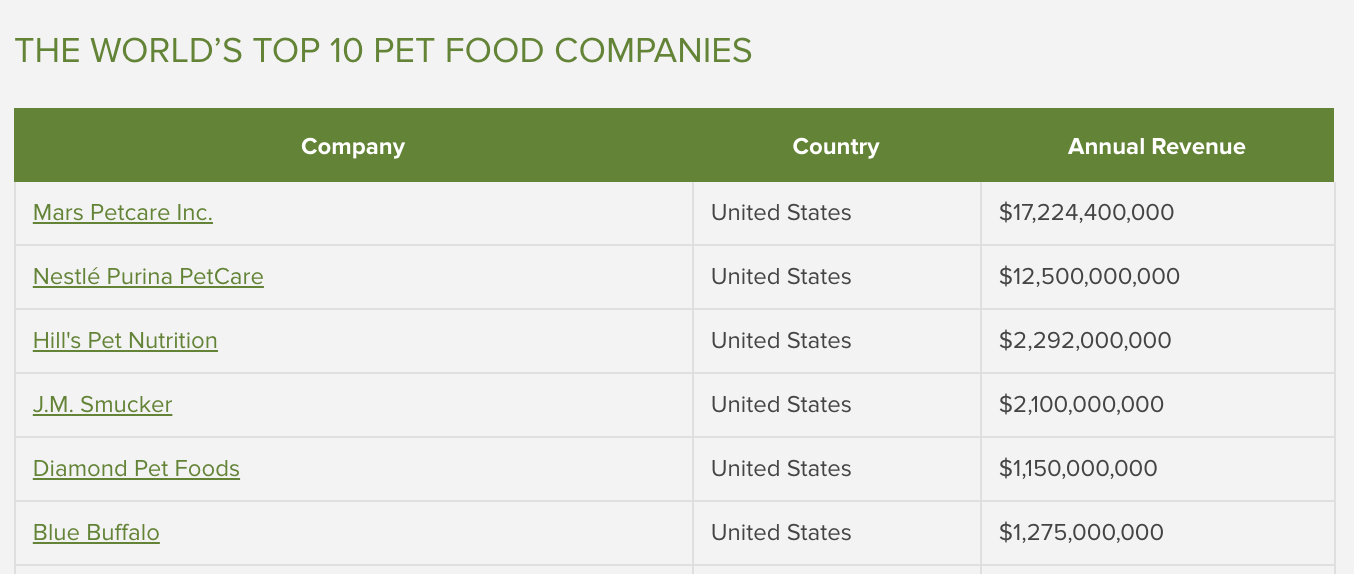
Sadly, each one of them produces very low-quality pet foods, according to our database.
You might come across information about how carbs aren’t that bad for cats, and that some cats need a low protein diet.
Interestingly, a huge chunk of this information comes from the mouth of these companies themselves!
I have read articles and even studies that got me questioning whether cats need high protein diets.
But when I check out the author, it usually leads me back to one of the big companies that stuff their food full of fillers.
Your cat’s health starts with the food you feed him.
Animal protein is the #1 food that will make him happy, healthy, and live a long life.
Domestic cats are pretty much the same biologically as their wild and feral cousins.
They have not evolved in any significant way over the last 100 years or so since commercial cat food was developed.
Therefore, what cats eat in the wild is a GREAT indicator of what they should be eating at home.
How To Read The Label
Labels can be SO hard to read!
Front Of Label Marketing Claims
First of all, the marketing mumbo-jumbo that companies are allowed to put on the front of the label is outrageous.
Did you know that if they have a food that says “Fall Feast with Chicken”, it must contain only 3% chicken?
There are very few regulations surrounding pet food and pet food marketing, and even fewer people policing the industry.
So whatever you read on the front of a label, just be wary!
Make sure you check the ingredients before believing anything you read.
Ingredient List
You should be looking for real, named meat sourced to be the top few ingredients.
That means things like “chicken”, “turkey”, “chicken liver”, etc.
Be wary of things like “animal digest”, “meat and bone meal”, or anything else that doesn’t specifically label which animal the ingredient comes from…unfortunately unnamed meat ingredients could be anything (including diseased animals, roadkill, euthanized pets, and in one case, even a baby circus elephant!).
After making sure that the first ingredients are meat, make sure it isn’t packed with grains and other carbohydrate fillers.
Things like corn, wheat, soy, and peas are common fillers that are no good for your cat.
Guaranteed Analysis
While pet food companies are required to list the guaranteed analysis of what nutrients are in the food, it’s hard to use this information.
You see, this data includes the moisture content of the food, making it hard to compare apples to apples.
For example, a wet food might have 82% moisture, and therefore show only 12% protein.
Dry food only has about 8% moisture, so can show 40% protein, for example.
You might think that food is better based on this information.
However, if you take the moisture out of each food to truly compare nutrition levels, you’ll see that the wet food is more protein-dense.
It’s even hard to compare wet foods if they have different moisture levels!
In our database, we’ve done calculations that show us the “dry matter” quantity of nutrients, as well as nutrients per calorie of the food.
These are MUCH better indicators…but they’re hard to come across.
If you want to dig in, there are calculators out there that show you how to do the calculations.
However, we’ve done the hard work for you, and compare foods on a per calorie basis, as you can see above.
This gives a MUCH more accurate picture of each food.
Guaranteed analysis can give you a rough idea of the food’s nutrients, but if you want to TRULY know what’s going on, you’ll need to convert those numbers to dry-matter or caloric basis numbers.
No Artificial Preservatives or Fillers
Did you know that some popular artificial preservatives like BHA are potential carcinogens?
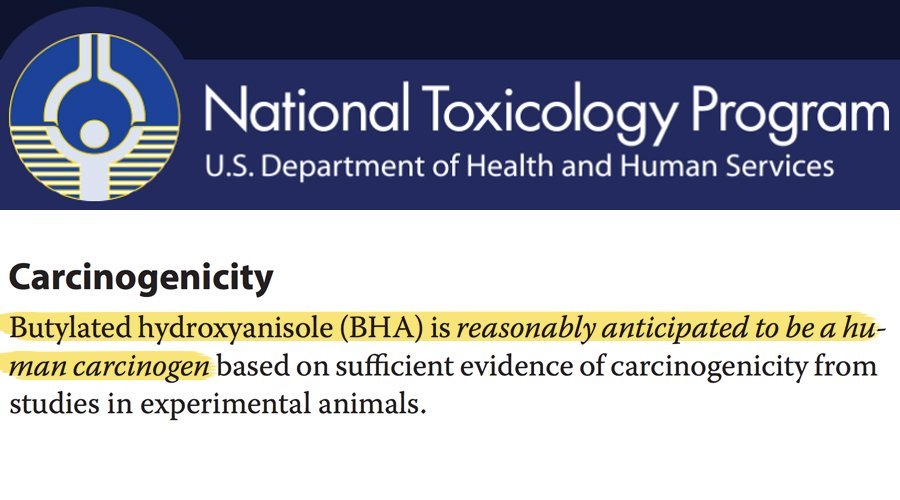
Meaning that prolonged use could cause cancer in your cat?
We like to see natural preservatives…things like mixed tocopherols.
If it contains an artificial chemical preservative, you can almost guarantee it’s a poor quality option.
Fillers are those ingredients that are not VITAL to your cat’s well being.
They’re usually put in a recipe to “fill” it up.
As we discovered, cats need meat…and that’s pretty much it.
So anything that’s not meat can be called a filler.
Common fillers are wheat, corn, peas, soy, and a variety of thickening agents.
In small quantities, they probably won’t hurt your cat.
But in the long run, these ingredients can cause serious side effects, including kidney and urinary tract diseases that can be fatal.
Some filler ingredients, like cellulose, are made from sawdust.
Even the whole food options like wheat and corn are hard for your cat to digest, and are not as bioavailable as meat. They are NOT good ingredients and will not deliver the nutrition your kitty needs to be fit throughout his life.
Ingredient Splitting
One of our biggest pet peeves is ingredient splitting.
This is when you see two very similar ingredients, but called something slightly different.
Companies do this so that they can still claim meat is the main ingredient in their food.
For example, you might see this ingredient list:
- Chicken
- Peas
- Pea fiber
- Pea protein
In this case, chicken is the largest ingredient. There is more chicken, by weight, than anything else in the recipe.
However, in many cases, when you combine the split ingredients, you’d see that chicken falls further down the list.
If there is 1 pound of chicken, .5 pounds of peas, .5 pounds of pea fiber, and .5 pounds of pea protein, clearly peas are the top ingredient, right? That’s 1 pound of chicken to 1.5 pounds of pea products.
But if companies listed these ingredients together, it would be obvious that there wasn’t much chicken in here, because it wouldn’t be the first ingredient.
So, when you see one ingredient come up over and over again but with different names, you can almost be sure that there’s not a lot of meat in the recipe.
Why Is Wet Food Better Than Dry Food?
Dry cat food is frankly bad for cats.
Since cats get most of their moisture from the meat they eat, they have a very low thirst drive.
If cats aren’t eating a wet food full of moisture (either prey animals or canned food), then they won’t be getting enough moisture from their food.
And they won’t be drinking enough from their water bowl to make up for it.
This leads to chronic dehydration and can lead to painful and deadly kidney and urinary tract diseases like FLUTD.
This is what Dr. Jennifer Coates, DVM, had to say about why wet is better than dry:
“Wet food is often the best option for cats for two main reasons. First of all, wet food has a much higher water content than does dry. When cats get a lot of water with their food, it’s easier for them to stay well-hydrated. This is especially important when a cat’s kidneys are not functioning well, since the kidneys are responsible for preventing excessive water loss through the urine. Secondly, wet food tends to have a lower carbohydrate and higher protein content in comparison to dry food. This more closely mimics the natural feline diet and may help prevent and/or manage common diseases like obesity and diabetes.”
Are By-Products Bad?
Considering high-quality meats are readily available, and that many companies use them, you have to wonder why by-products are used at all.
There are only two real options here:
- They’re better for cats
- They’re cheaper for manufacturers
We only recommend the best and most biologically appropriate foods at Catological.
So if by-products are good for cats, then surely we’d be on board!
But by-products are everything that’s left over from an animal after the “prime” cuts of meat have been removed for human consumption.
That means there’s usually just a carcass left, with things like beaks, feathers, less desirable organs, bones, and the like.
While cats in the wild would eat some of these things as part of the prey animal they caught, the by-products would be only a small part of their meal.
Cats want organ meat and then muscle meat and some bones.
So, they don’t seem to be better for cats, since they’re missing many of the important parts that cats love, and won’t have all the nutrients they need.
Oh, and they’re often rendered beyond the point of recognition, which means they likely go through multiple heating cycles and get mixed in with all manner of other less than amazing ingredients.
OK, so by-products are not added because they’re the best option for cats.
I think it’s safe to say that they’re only included because they’re cheaper for manufacturers.
You’ve been to the grocery store recently, right? Nice cuts of meat aren’t cheap!
But a carcass that’s been stripped of all the nice cuts of meat is NOT going to cost the same as a chicken breast, pound for pound.
So manufacturers use by-products to boost the protein of their foods on the cheap.
And once a company is using by-products to save a buck, they often use other low-quality ingredients to boost their profits even more.
It’s for this reason that we do not like to see by-products in any cat food.
If you’ve read all of this without choosing a food, rest assured that all of our top picks on this page are by-product free, have little to no fillers, and are packed with animal protein and organ meats.
Click here to jump back up the page to see our reviews again.


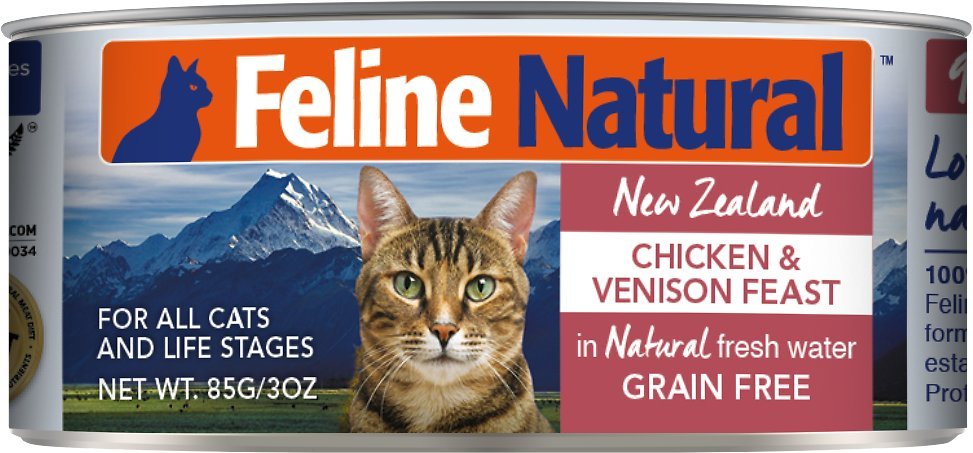

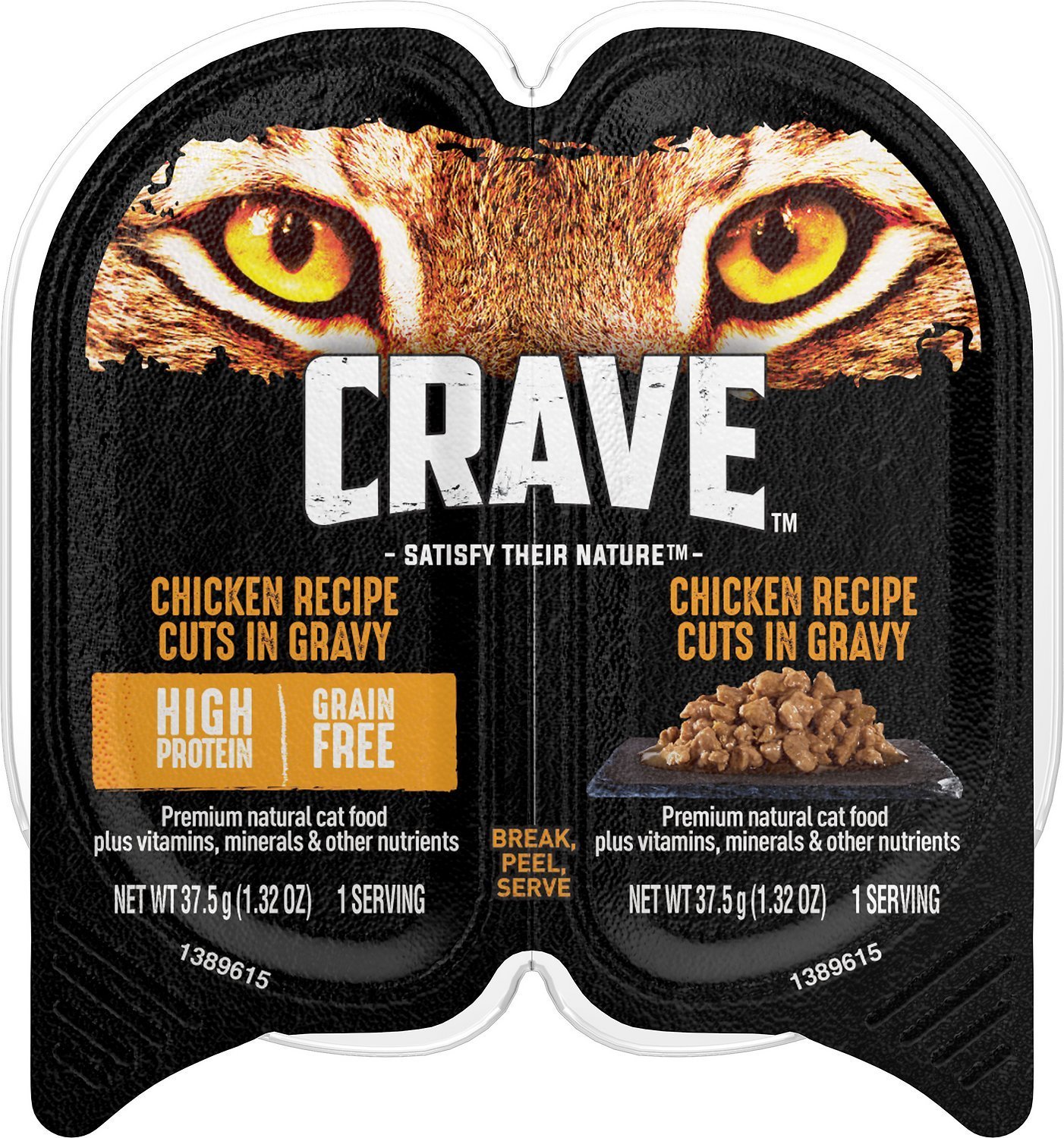

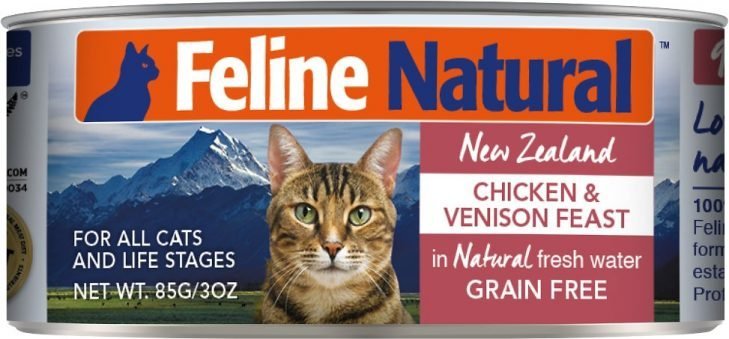
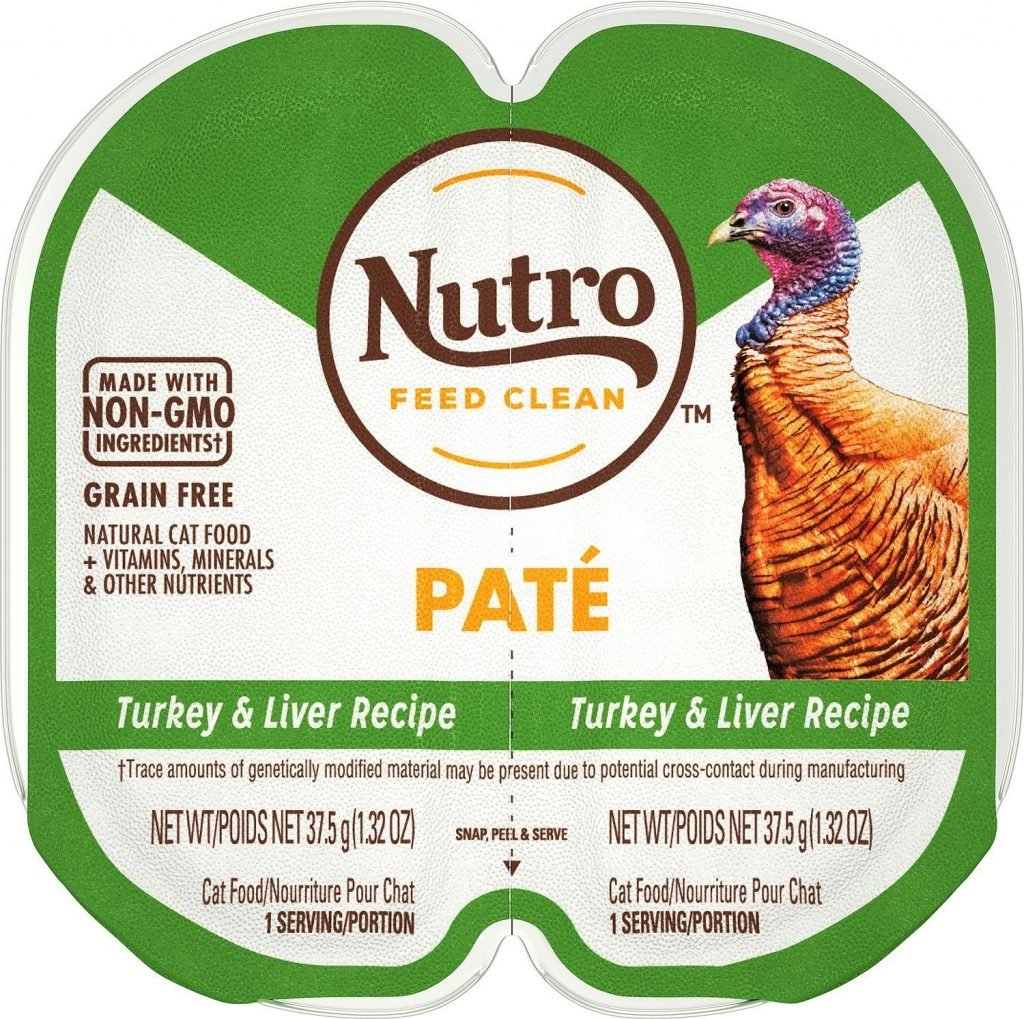
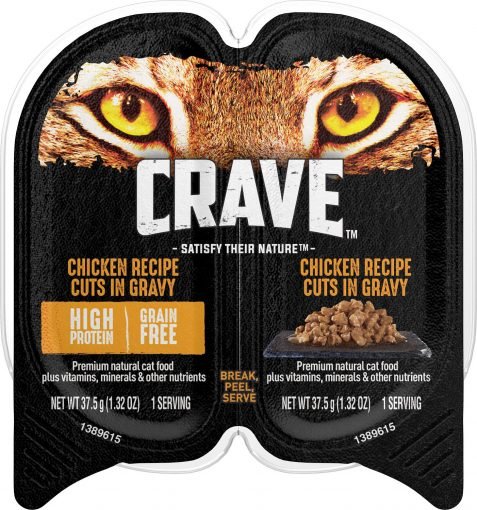

I rescue strays dogs and cats. I have dog doors for everyone to come and go on my 10 acres. The cats do bring in all the things mentioned. Soooo with all the cats I have and will have what would you recommend to feed them and not break the bank here. I currently feed dry Taste of the wild and can ed Earthborn. It is so important,and crazy difficult to find GOOD food for cats and dogs. With how our emotions are tied up over them, how we make them our family. I am so Outraged at some of the crap they put in their food. I think the makers should be forced to eat their own products. Thank you for your time,dedication and love of the furry babies!
Renee Grace
Hi Renee!
Thank you for rescuing stray dogs and cats! I’m grateful of all the hard work you must do.
We did the same in depth run down to find the best cheap cat food as we did on our wet cat food page. You can find our picks here:
Best Cheap Cat Food
There’s not a lot of super cheap options that are any good, but these are at least fairly cheap and pretty good. I hope one of those works for you!
Hello, Emily. Thank you for all the research you’ve done on the best cat foods. I have two 11-month old kittens who will graduate to adult cat food soon. I read that grain-free is not the best food as cats need the taurine present in grains for coronary protection. What are your thoughts? Thank you.
Hi Susan,
There is a lot of debate on this subject. The problem is no two grain-free cat foods are alike. A lot of cat foods that are grain-free have filler carbs and legumes (like peas) that aren’t good for your cat, if overdone.
Cat food companies are good marketers. They make it seem as if grain-free cat food is some panacea. But in and of itself, it is not. You need to look at each cat food in it entirety to know if it’s meeting the needs for your cat.
We recommend a number of grain-free cat foods, because meat is the primary dietary need for cats. But if a grain-free food is full of other carbs, fillers, and unhealthy ingredients, then it certainly can be worse than having grains.
Best,
Emily